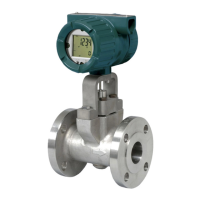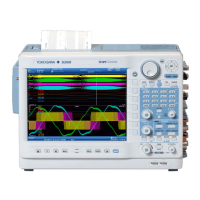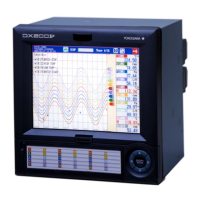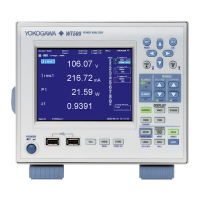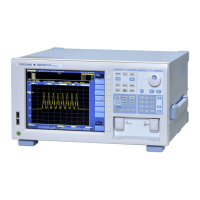<5. CONFIGURATION>
5-4
IM 01F06F00-01EN
In each digitalYEWFLO, the PD tag and node
address are set to “FT1003” and 242 (hexadecimal
F2), respectively, before shipment from the factory
unless otherwise specied. To change only the
node address, clear the address once and then set
a new node address. To set the PD tag, rst clear
the node address and clear the PD tag, then set the
PD tag and node address again.
Devices whose node address have been cleared
will await at the default address (randomly chosen
from a range of 248 to 251, or from hexadecimal
F8 to FB). At the same time, it is necessary
to specify the device ID in order to correctly
specify the device. The device ID of the YF100 is
5945430009xxxxxxxx. (The xxxxxxxx at the end
of the above device ID is a total of 8 alphanumeric
characters. Available characters are as follws.)
ABCDEF
0123456789
5.5 Communication Setting
To set the communication function, it is necessary
to change the database residing in SM (System
Management)-VFD.
5.5.1 VCR Setting
Set VCR (Virtual Communication Relationship),
which species the called party for communication
and resources. Each digitalYEWFLO has 33 VCRs
whose application can be changed, except for the
rst VCR, which is used for management.
Each digitalYEWFLO has VCRs of four types:
Server (QUB) VCR
A server responds to requests from a host. This
communication needs data exchange. This type
of communication is called QUB (Queued User-
triggered Bidirectional) VCR.
Source (QUU) VCR
A source multicasts alarms or trends to other
devices. This type of communication is called
QUU (Queued User-triggered Unidirectional)
VCR.
Publisher (BNU) VCR
A publisher multicasts outputs of the AI blocks, DI
blocks, AR block, IT block and PID block to other
function blocks. This type of communication
is called BNU (Buffered Network-triggered
Unidirectional) VCR.
Subscriber (BNU) VCR
A subscriber receives output of another function
block(s) by AR block, IT block and PID block.
Each VCR has the parameters listed in Table 5.4.
Parameters must be changed together for each
VCR because modication for each parameter may
cause a contradiction.

